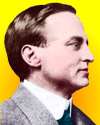
On 7 Jan 1958, Willis Rodney Whitney died. He was the American chemist and research director who founded the General Electric Company's research laboratory and directed pioneering work there. He is known as the “father of basic research in industry” because it became a model for industrial scientific laboratories elsewhere in the U.S. In Oct 1900 he was offered a research position at the General Electric (GE) Co., Schenectady, N.Y. His self-directed research program there began on a basis of three days a week. He quickly proved that chemical research techniques (such as use of an electric furnace) could be highly useful in the electrical industry. By 1904 he was directing 41 staff. His own 40 patents included the GEM lamp filament (1904), but contributed indirectly to many inventions. In the article he wrote on The Biggest Things in Chemistry in The Journal of Industrial and Engineering Chemistry (1921) he gives some of his own personal experiences in chemistry and then outlines aspects of chemistry as it appeared then. You can compare what he writes then with what he might have written now.

On 9 Jan 1870, Joseph Strauss was born, American civil engineer who was chief engineer for the construction of the Golden Gate Bridge, San Francisco. Today's book pick is: The Gate: The True Story of the Design and Construction of the Golden Gate Bridge, by John van der Zee, a case study of personal and technological adventure. The engineers in this book come alive as people, with faults and foibles. This complete history of the longest single-span suspension bridge of its time presents the cutting-edge engineering as much, much more than science and technology, along with an exciting drama of human greed, ambition, frailty, courage, and intellectual achievement.
It is available from Amazon, typically about New from $9.34. Used from $6.41. (As of earlier time of writing - subject to change.)
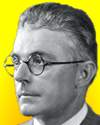 | Give me a dozen healthy infants, well-formed, and my own specified world to bring them up in and I’ll guarantee to take any one at random and train him to become any type of specialist I might select—doctor, lawyer, artist, merchant-chief and, yes, even beggar-man and thief, regardless of his talents, penchants, tendencies, abilities, vocations, and race of his ancestors. (1930) |
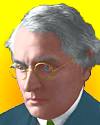 | Even more difficult to explain, than the breaking-up of a single mass into fragments, and the drifting apart of these blocks to form the foundations of the present-day continents, is the explanation of the original production of the single mass, or PANGAEA, by the concentration of the former holosphere of granitic sial into a hemisphere of compressed and crushed gneisses and schists. Creep and the effects of compression, due to shrinking or other causes, have been appealed to but this is hardly a satisfactory explanation. The earth could no more shrug itself out of its outer rock-shell unaided, than an animal could shrug itself out of its hide, or a man wriggle out of his skin, or even out of his closely buttoned coat, without assistance either of his own hands or those of others. |
 | I happen to be a kind of monkey. I have a monkeylike curiosity that makes me want to feel, smell, and taste things which arouse my curiosity, then to take them apart. It was born in me. Not everybody is like that, but a scientific researchist should be. Any fool can show me an experiment is useless. I want a man who will try it and get something out of it. |
| Before you look at today's web page, see if you can answer some of these questions about the events that happened on this day. Some of the names are very familiar. Others will likely stump you. Tickle your curiosity with these questions, then check your answers on today's web page. | |
| Births | |
 | Sir Alec Jefferys, born 9 Jan 1950, is an English geneticist who did some work on hereditary disease by tracing genetic markers through families to understand inheritance patterns of illness. However, he is best known for the extension of this work. For what purpose is the technique he discovered now widely used? |
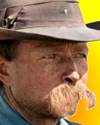 | On 8 Jan 1864, Paul Kroegel was born, the German-American conservationist who was the first U.S. Game Warden at the first U.S. bird sanctuary. Acting alone, he began guarding the birds there from relentless slaughter by hunters harvesting the plumage for the women's fashion trade. He continued protecting the bird life until he died. The name of the sanctuary included the name of which bird that he protected from hunters of its plumage? |
| Deaths | |
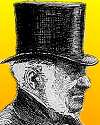 | William Hedley (1779-1843) was an English coal-mine official and inventor who was probably the first to build a commercially useful steam locomotive dependent on friction between wheels and rails (as prevails in modern times) as opposed to any geared track. He patented this design on 13 Mar 1813. The same year, his locomotive began to pull coal trucks on a five mile line from a mine at Wylam, Northumberland, to dockside at Lemington-on-Tyne. Can you name this locomotive? |
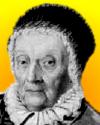 | On 9 Jan 1848, the sister of one of England’s famous astronomers died. She did significant work assisting him in his astronomical researches making calculations associated with his studies. In her own telescope observations, she found three nebulae and eight comets. (Her brother fathered a son who also followed them into astronomy.) Who was the sister? |
| Events | |
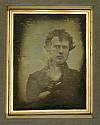 | On 9 Jan of a certain year, the daguerrotype photo process was announced at the French Academy of Science. In which decade was the daguerrotype announced? |
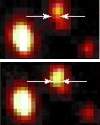 | On 9 Jan 1998, two teams of international collaborations of scientists announced the discovery that galaxies are accelerating, flying apart at ever faster speeds, by observing distant, ancient exploding stars. This observation implies the existence of a mysterious, self-repelling property of space. Such had earlier been proposed by a theoretical physicist, which he called the cosmological constant. Who was the theoretical physicist? |
Fast answers for the previous newsletter for January 8: Stephen Hawking is the 17th Lucasian Professor (Michael Green became the 18th in 2009) • sunspots • cotton gin • Galileo Galilei • tallying data for the 1890 U.S. census • George Washington.
 If you enjoy this newsletter, the website, or wish to offer encouragement or ideas, please send feedback by using your mail reader Reply button.
If you enjoy this newsletter, the website, or wish to offer encouragement or ideas, please send feedback by using your mail reader Reply button. Your click on a Facebook, StumbleUpon, or other social button on the site webpages is also a welcome sign of appreciation. Thank you for using them.
© This newsletter is copyright 2020 by todayinsci.com. Please respect the Webmaster's wishes and do not put copies online of the Newsletter — or any Today in Science History webpage. (If you already have done so, please remove them. Thank you.) Offline use in education is encouraged such as a printout on a bulletin board, or projected for classroom viewing. Online, descriptive links to our pages are welcomed, as these will provide a reader with the most recent revisions, additions and/or corrections of a webpage. For any other copyright questions, please contact the Webmaster by using your mail reader Reply button.
--
If you do not want to receive any more newsletters, Unsubscribe
To update your preferences and to unsubscribe visit this link
Executive Real Estate Business Class
-
"It was like a man with wings. It wasn't like anything you'd see on TV or in a monster movie." ...
About the publisher
Search This Blog
Blog Archive
-
▼
2021
(585)
-
▼
January
(109)
- Ian Kershaw on why Hitler declared war on America
- On This Day for January 31 - Guy Fawkes executed i...
- Newsletter for Sunday 31 January.
- January 31: Slavery Abolished in the USA, Guy Fawk...
- On This Day for January 30 - “Great Soul” assassin...
- Newsletter for Saturday 30 January.
- January 30: Oliver Cromwell Ritually Executed, Mah...
- On This Day for January 29 - Iraq, Iran, and North...
- Newsletter for Friday 29 January.
- January 29: Romeo and Juliet, Coca-Cola and the Se...
- 'The Food That Built America' Is Back!
- On This Day for January 28 - Explosion of the spac...
- Newsletter for Thursday 28 January.
- Inside The Still-Mysterious Circumstances Of Heath...
- Demystified: What’s the Difference Between a Presi...
- On This Day for January 27 - Vietnam War ended, Wo...
- Newsletter for Wednesday 27 January.
- January 27: Kaiser Bill is Born, the Siege of Leni...
- You are now unsubscribed
- What The Wild West Actually Looked Like in 48 Reve...
- New Savings! $50 off Family Memberships
- On This Day for January 26 - First European settle...
- Newsletter for Tuesday 26 January.
- January 26: Catholic Counter-Reformation, British ...
- On This Day for January 25 - Claudius affirmed as ...
- Newsletter for Monday 25 January.
- January 25: São Paulo Founded, Charles Wilkes Disc...
- Queen Victoria and Prince Albert's marriage | Wors...
- On This Day for January 24 - Opportunity's Mars la...
- Newsletter for Sunday 24 January.
- January 24: Scouting for Boys, Apple's Macintosh a...
- On This Day for January 23 - Madeleine Albright sw...
- See All That's Interesting Most Popular Articles
- Please Confirm Subscription To Our Newsletter
- The "Alaskan Avenger" Who Attacked Sex Offenders W...
- On This Day for January 22 - Roe v. Wade ruling, L...
- Newsletter for Friday 22 January.
- On This Day for January 21 - First commercial Conc...
- Newsletter for Thursday 21 January.
- Need Context with Your News?
- Demystified: Where Do Honeybees Go in the Winter?
- On This Day for January 20 - Barack Obama sworn in...
- Newsletter for Wednesday 20 January.
- On This Day for January 19 - Rule in India transfe...
- Newsletter for Tuesday 19 January.
- On This Day for January 18 - German Empire establi...
- Newsletter for Monday 18 January.
- January 18: King of Siam Kills the Crown Prince of...
- Queen Victoria and Prince Albert: was their union ...
- On This Day for January 17 - Hawaiian monarchy ove...
- Newsletter for Sunday 17 January.
- January 17: US-Modoc War, the UN Security Council ...
- On This Day for January 16 - Beginning of Persian ...
- Newsletter for Saturday 16 January.
- January 16: Ivan the Terrible, Louis XVI's Death S...
- The Tragedy Of David Reimer, The Boy Forced To Liv...
- On This Day for January 15 - British Museum opened...
- Newsletter for Friday 15 January.
- January 15: Henry VIII and the Church of England, ...
- On This Day for January 14 - Premiere of Giacomo P...
- Newsletter for Thursday 14 January.
- January 14: The Dutch Conquer Malacca, the US Revo...
- Demystified: Why Does Water Freeze from the Top Down?
- On This Day for January 13 - Émile Zola's “J'accus...
- Newsletter for Wednesday 13 January.
- January 13: 1st Issue of "The Times" of London, Ch...
- On This Day for January 12 - Haiti severely damage...
- Newsletter for Tuesday 12 January.
- January 12: A Day of Coronation, Gandhi's Last Fas...
- On This Day for January 11 - Amelia Earhart's Hawa...
- Newsletter for Monday 11 January.
- January 11: Spices, Morse Code, Insulin and 55 Yea...
- The real history behind Bridgerton
- On This Day for January 10 - Common Sense publishe...
- Newsletter for Sunday 10 January.
- January 10: Thomas Paine Publishes Common Sense, T...
- On This Day for January 9 - Election of Mahmoud Ab...
- THE IGBO LANDING - HOW THEY COMMITTED SUICIDE
- Newsletter for Saturday 9 January.
- January 9: Joan of Arc's Trial, the Daguerreotype ...
- The Biggest Historical Discoveries From 2020 And M...
- On This Day for January 8 - Anniversary of Grimald...
- Newsletter for Friday 8 January.
- January 8: US National Debt Briefly Hits $0, Forma...
- On This Day for January 7 - Galileo's discovery of...
- Newsletter for Thursday 7 January.
- January 7: A Day of Invention - The Typewriter, Hy...
- On This Day for January 6 - Epiphany, Richard II i...
- Newsletter for Wednesday 6 January.
- January 6: Charles I put on Trial for Treason, FDR...
- Meet The Real-Life Goodfellas Whose True Stories W...
- On This Day for January 5 - Golden Gate Bridge con...
- Newsletter for Tuesday 5 January.
- January 5: Richmond Burns, The Nazi Party Forms, A...
- Last Call for 30% off Memberships
- On This Day for January 4 - Burma granted independ...
- Newsletter for Monday 4 January.
- January 4: The Colt Revolver, a 33 Year Strike and...
- Dangers of Victorian London| Roman history quiz | ...
- On This Day for January 3 - Martin Luther excommun...
-
▼
January
(109)
-
Blogroll
-
About
HistoryFact










0 comments:
Post a Comment